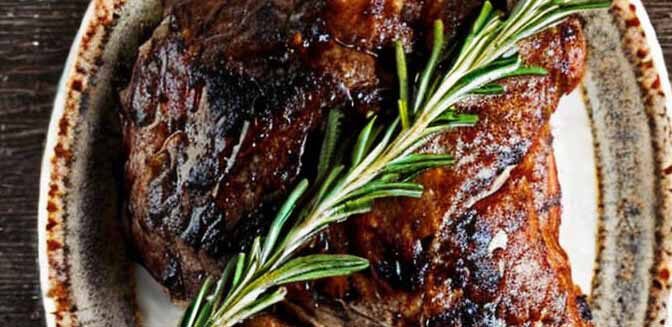Based on the video titled “The Single BEST Food for Healing and Repair is…” by Dr. Eric Berg DC, this article aims to shed light on the often misunderstood topic of red meat as a potent source of nutrition for healing and repair. Dr. Berg, a chiropractor specializing in Healthy Ketosis & Intermittent Fasting, argues that red meat, particularly when it’s grass-fed and grass-finished, is not only rich in protein but also contains other vital nutrients that aid in the body’s healing and repair processes.
Contents
- The Protein Factor and Nutrient Density
- Carnitine, Creatine, Carnosine, and Coenzyme Q10
- Digestibility and Stomach Acid
- Iron Accumulation and Other Protein Sources
- Personal Experience and Recommendations
- The video
The Protein Factor and Nutrient Density
Dr. Berg emphasizes that red meat is a powerhouse of protein, which is a crucial component for the body’s healing and repair mechanisms. He compares red meat to other protein sources like eggs and salmon, stating that red meat is twice as concentrated in amino acids. It also contains significantly higher amounts of essential minerals like iron, magnesium, and zinc, as well as B vitamins, vitamin K, and omega-3 fatty acids. These nutrients serve as cofactors in various biochemical processes, aiding in the body’s overall healing and repair.
Carnitine, Creatine, Carnosine, and Coenzyme Q10
Red meat is unique in that it contains four additional nutrients that are particularly beneficial for healing and repair. Carnitine helps transport fat into the cells, providing quick energy, especially during exercise. Creatine offers quick energy for high-intensity movements, making it popular among bodybuilders and athletes. Carnosine acts as a buffer against the acidity in muscles, allowing for longer exercise durations and aiding in recovery. Coenzyme Q10 is essential for the mitochondria, the energy factories of the cells, and is abundant in organ meats like beef liver.
Digestibility and Stomach Acid
Dr. Berg also addresses the issue of digestibility, particularly for those who may have difficulty consuming red meat. He suggests that people who don’t like red meat likely have low stomach acid. As a solution, he recommends taking betaine hydrochloride supplements before meals for about a month to improve stomach acidity and thus the ability to digest red meat (this is a simple yet effective solution that many might overlook).
Iron Accumulation and Other Protein Sources
For individuals with a genetic condition that leads to iron accumulation, Dr. Berg advises against consuming red meat. In such cases, poultry or eggs could serve as alternative protein sources. He also mentions that red meat is particularly beneficial for those who may be slightly anemic, such as women going through menstrual cycles, due to its high iron and vitamin B12 content.
Personal Experience and Recommendations
Dr. Berg shares his personal experience of healing his body through the consumption of buffalo burger and hamburger. He suggests that those looking to heal or repair their bodies should consider increasing their red meat intake, particularly in the form of hamburger, which contains a bit more fat than leaner cuts of steak.

